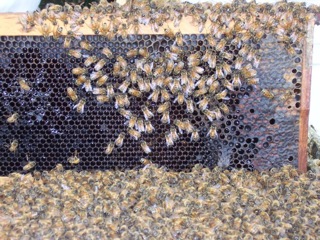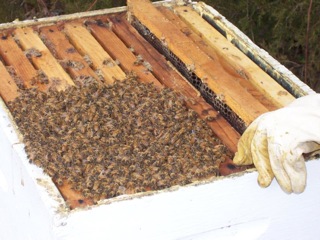Across the US, bees are dying because of a phenomenon known as Colony Collapse Disorder (CCD). This disorder is characterized by adult worker bees going out to obtain pollen and not being able to find their way back to the hive. The colony is left in a weaker state because it is without all or most of its productive adult members, and sooner or later breaks down.
Collapse Disorder (CCD). This disorder is characterized by adult worker bees going out to obtain pollen and not being able to find their way back to the hive. The colony is left in a weaker state because it is without all or most of its productive adult members, and sooner or later breaks down.
In a 2009 report by Raymond Cloyd, Associate Professor for the Department of Entomology Extension at Kansas State University, the loss of honeybees in the US was estimated at 30-90%, depending on the area.
Timmons tells SciJourner that in Missouri there are far less commercial beekeepers than in many other states, and most are hobbyists. Elsewhere, commercial beekeepers take their bees to states as far away as Florida and California to pollinate major crops. These keepers experience CCD more than the hobbyists; their bees undergo significantly more stress from the long travels. Timmons went on to say that the smaller hobbyist keepers in Missouri are able to take better and closer care of their honeybees and, therefore, stress does not build on their bees.
“It seems the smaller beekeepers spend more time per hive and are more aware of what is going on inside their hives,” says Joyce Sammons, a honeybee keeper in St. Charles County, MO.
 demand for pollination.”
demand for pollination.”
Assistant professor Jamie Ellis of the IFAS Extension indicates that the loss of honeybees “signal a decline in the health of our environment. Honey bees are biological indicators, meaning that their status is a reflection of the health of the general environment.”

This work is licensed under a Creative Commons Attribution-NonCommercial-NoDerivs 3.0 Unported License















An excellent article on CCD. But I would still like more credible sources to explain why or how Missouri has not experienced such bad losses due to CCD. Do those local beekeepers reflect the consensus of scientific research on the topic?
Great article I did not no that Missouri was doing good on the bee poppulations compared to the other states.
This is a very interesting article that has made me aware of a problem in our environment that i didn’t know about previoulsy. But why isn’t this problem as significant in MO? Otherwise it is very well done
I like reading this article, I thought it was really well written but it made me wonder, is there anything that can reverse the effects of CCD for the bees?